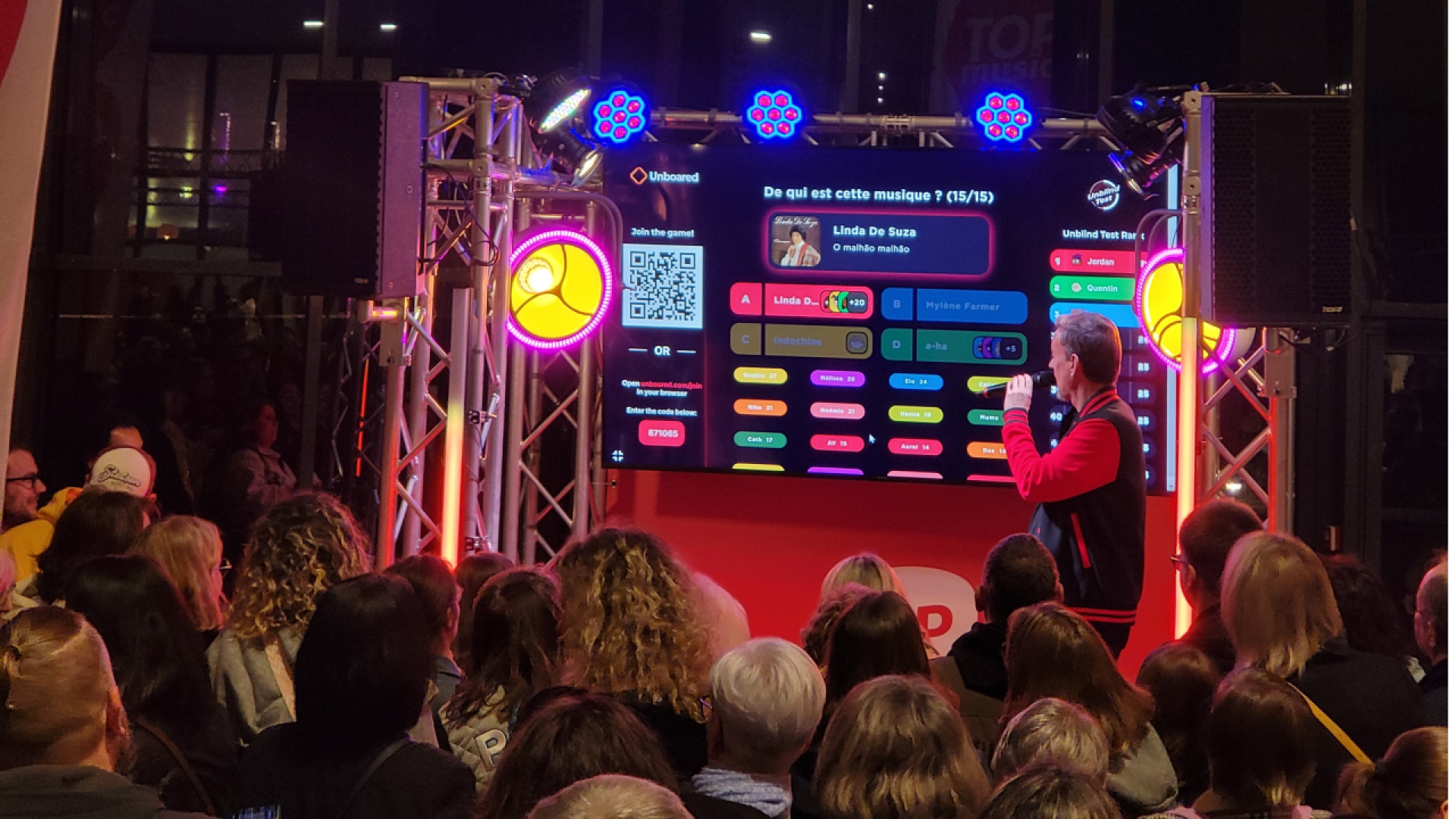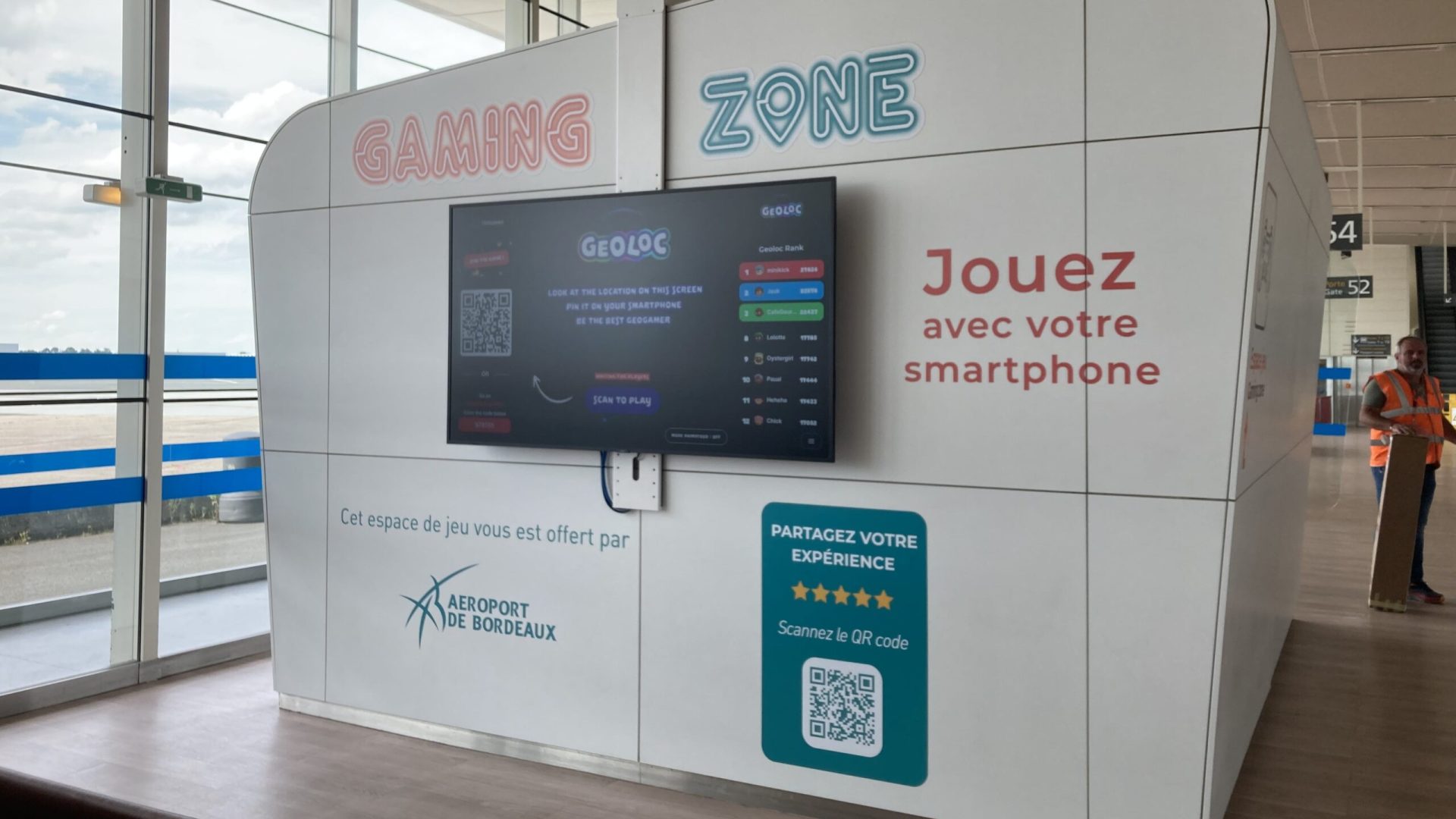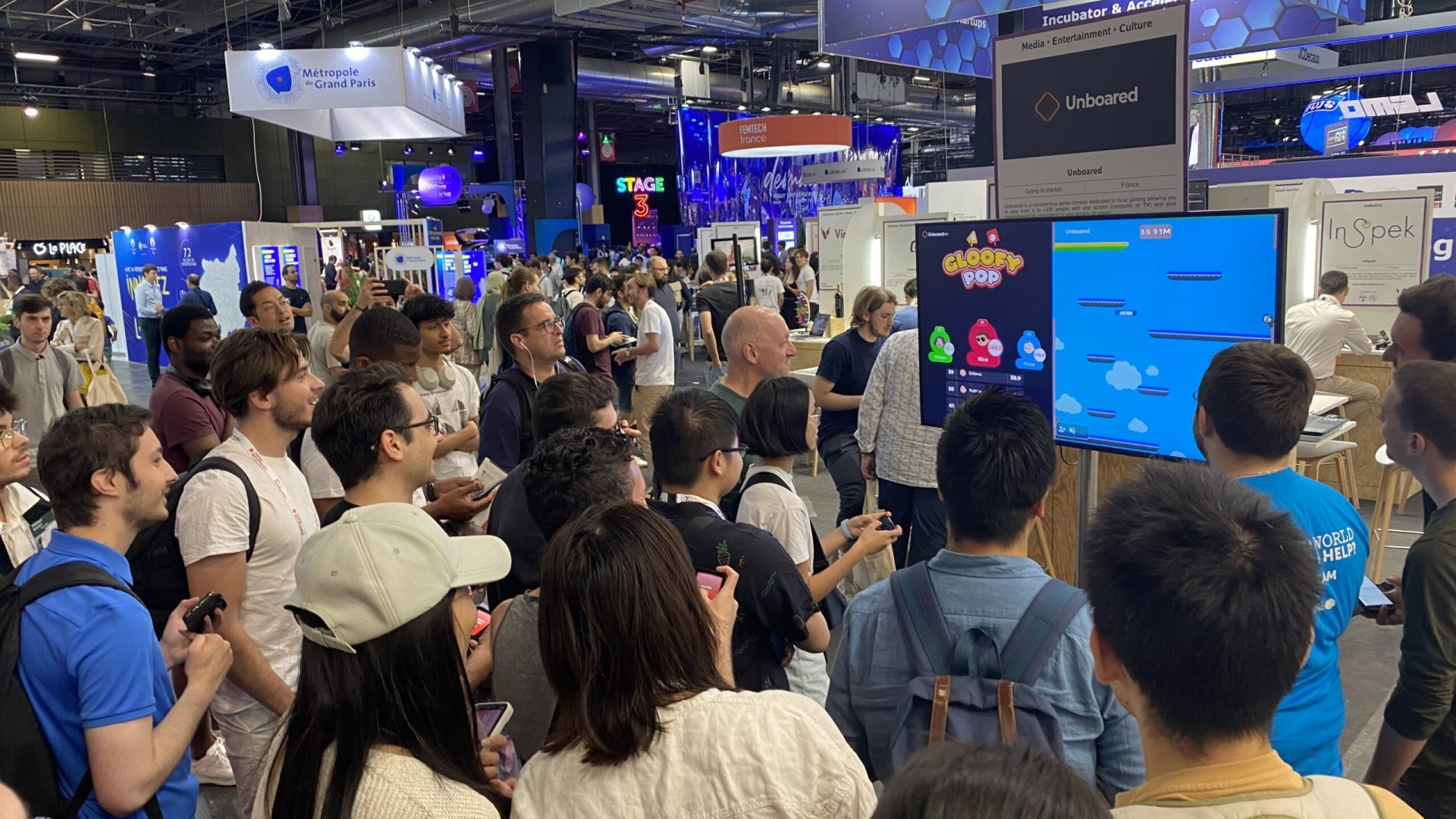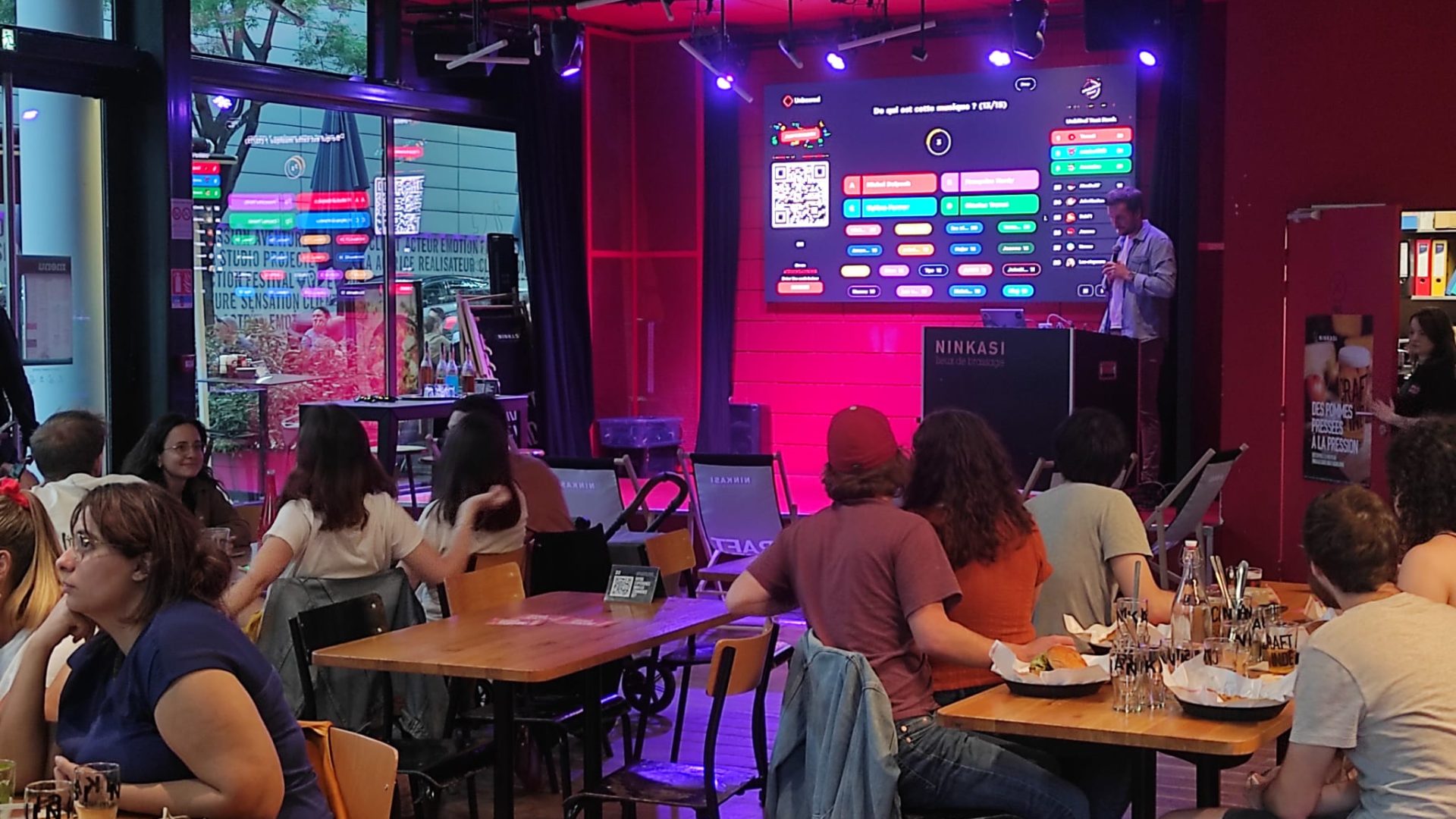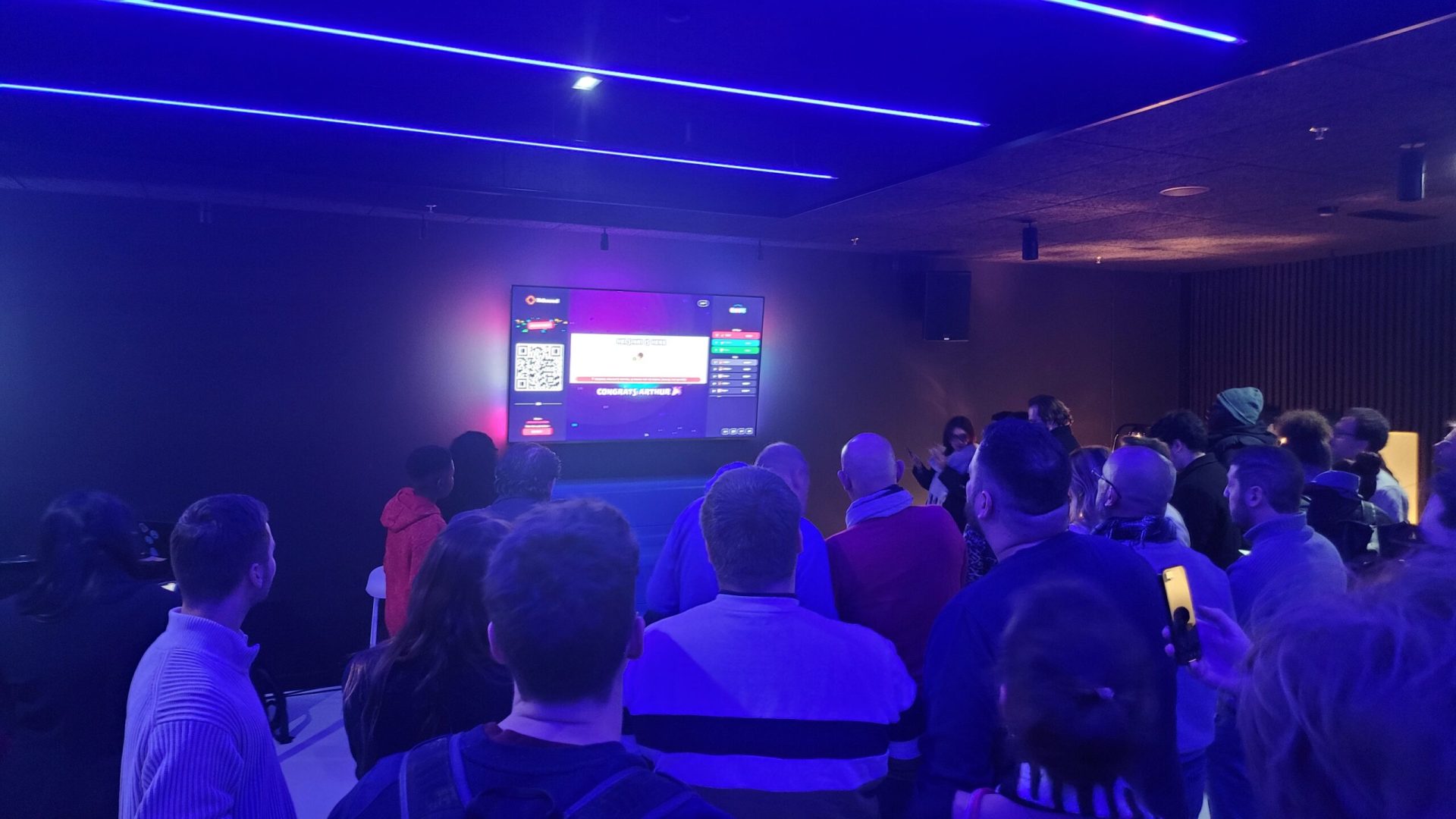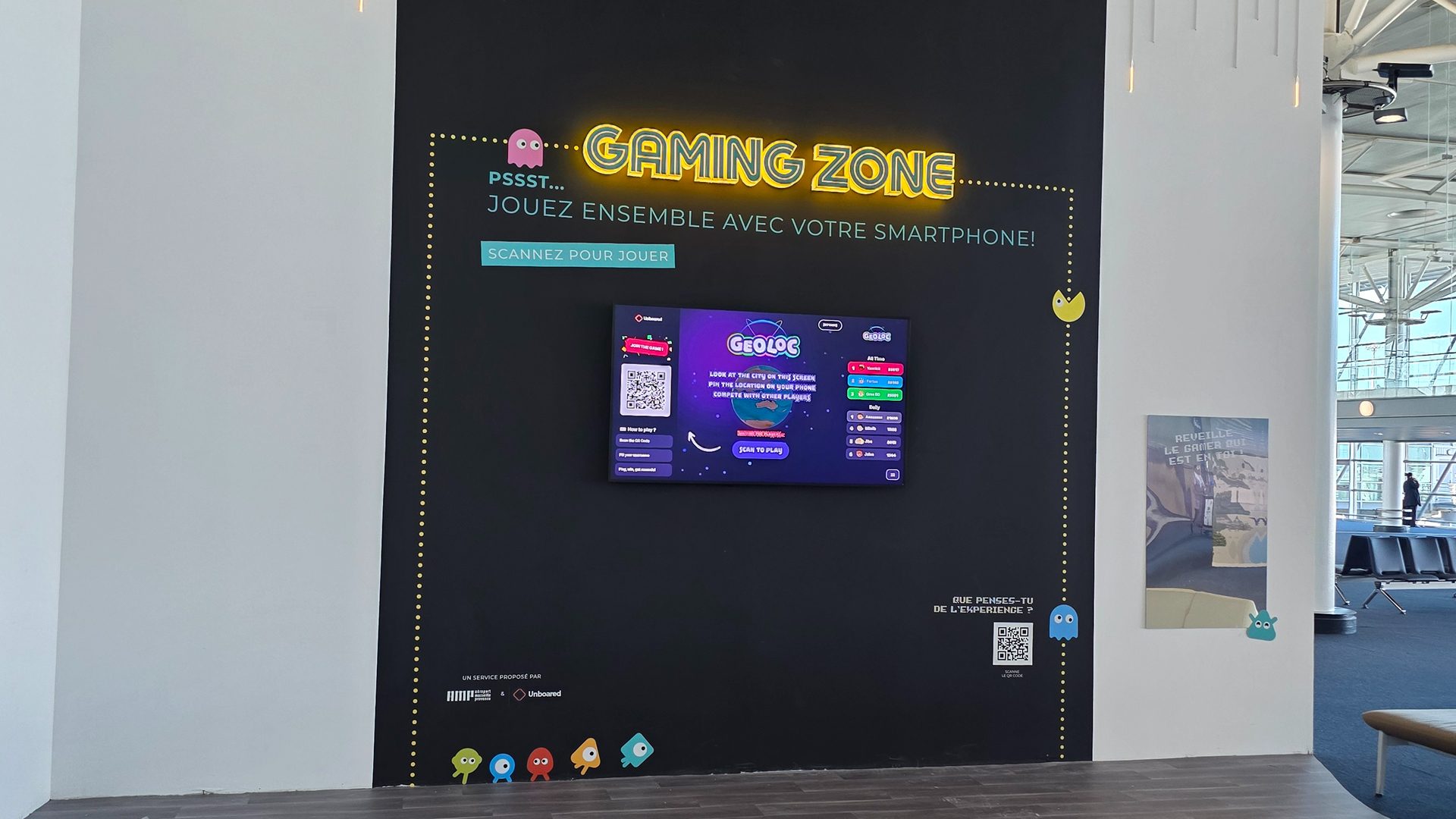Unboared: connect people through games
March 21, 2025
In 2023, Unboared began to be deployed in airports, bars, and arenas. The solution lets users play games on a TV using their smartphone as a controller, from 1 to +100 players to strengthen client experience and marketing.
As co-founder and CEO, I shaped the product vision, oversaw product iterations and go-to-market strategy buy building partnerships with key actors.
Product
Unboared
Skills
Product management
Product design
Business strategy
User research & growth
B2B SaaS
My role
CEO and Design lead
Timeline
Q2 2022 – Today
Team
David Albert (CTO), Juba Aït-Adda (Fullstack Developer), Thomas Raulin (Game Programmer), Lucas Esposito (Game Programmer), Aida Menheim (Game Artist), Gabriel Kenig (Game Artist)
From Insight to Idea: The Genese of Unboared
In a world where cloud gaming eliminates the need for physical consoles and where smartphones are omnipresent, a clear opportunity emerged: what if people could turn any screen into a multiplayer console, using only their phones as controllers?
After the pandemic, QR codes had become a near-universal behavior. Combine that with the insight that local multiplayer games, straddling the line between social board games and digital entertainment, were beloved but underserved — and Unboared was born.
The name says it all: « Unboared » plays on two ideas — breaking out of the traditional board game format (« un-boarded ») and defeating boredom (« un-bored ») by turning any screen into a shared playground.
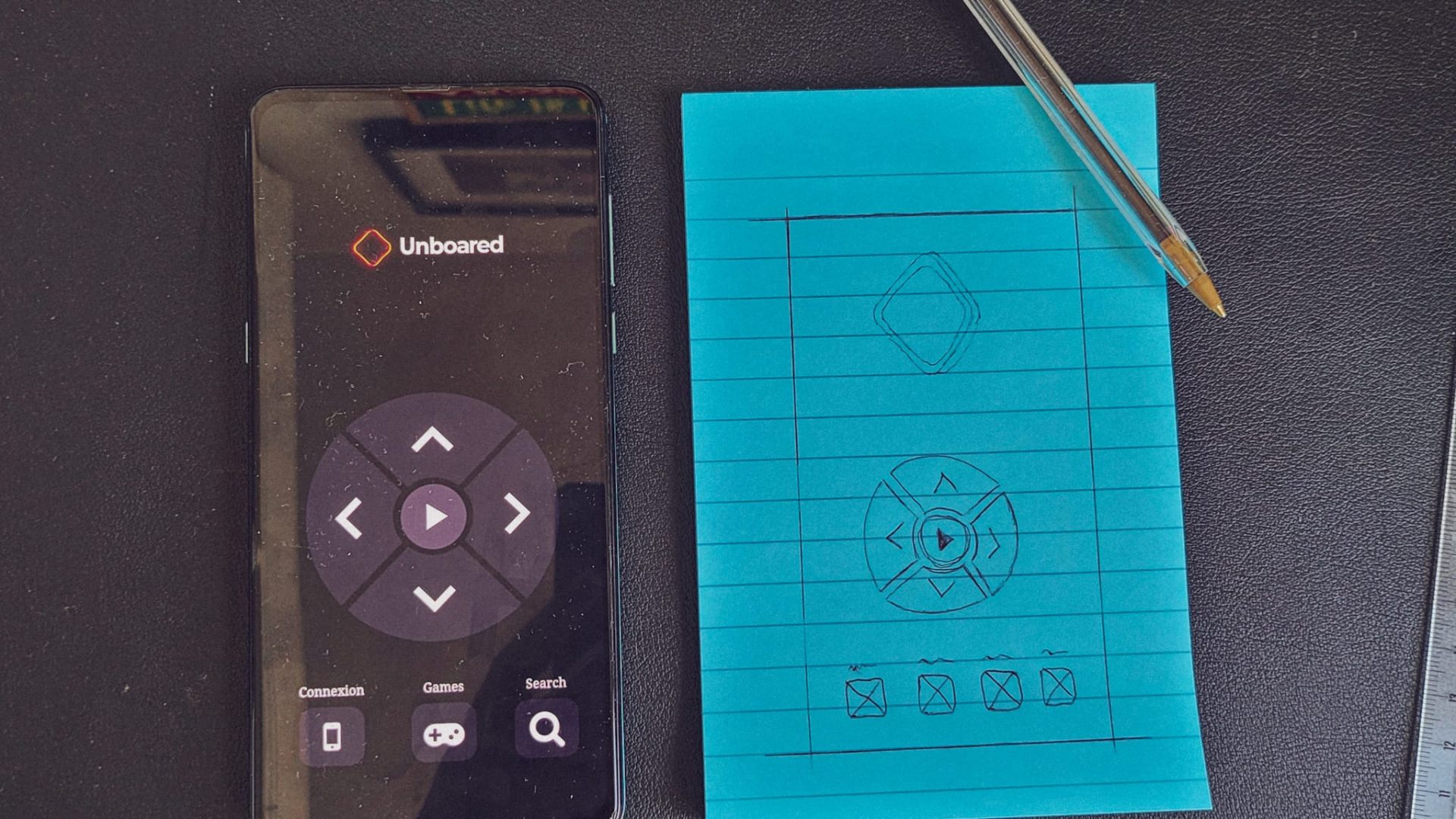
Designing the MVP: Research-Driven Product Framing
We kicked off the product design process with a qualitative research sprint to validate our assumptions. Through interviews with 30+ early adopters (gamers, casual players, group activity lovers), we identified key success factors:
Access must be frictionless: no app download, no setup.
The experience must feel exclusive and novel.
The platform should offer more than a single game — a catalog is expected.
Armed with these insights, we developed the first MVP in just under a month: a browser-based platform, instantly accessible via QR code, allowing up to 20 people to join and play simultaneously. We included three test games to explore behavioral preferences.
To evaluate traction and usability, we ran 5 focus groups of 7 participants each.
Sessions were designed as 1-hour play sessions with free interaction. Observations and post-tests revealed:
65% of users said they wanted to play again
However, onboarding was inconsistent; some users struggled to understand how to join a game
We added a layer of behavioral measurement: post-session access tracking. Despite a primitive UI, 22% of participants returned to the platform voluntarily within 30 days. This validated our core proposition.
MVP Testing: Learning Through Focus Groups
Iteration: UX, UI, and Game Design In-House
We immediately focused on reducing friction:
Streamlined onboarding: optimized QR code landing, clearer CTAs, visual confirmation of game joining
Brighter, more accessible UI for group visibility
Testing multiple input methods (tap, swipe, mic) for more intuitive control schemes
Unable to afford licensed games or studios, we chose to build all our games in-house. This required upskilling in game design, and we embraced a test-and-learn approach.
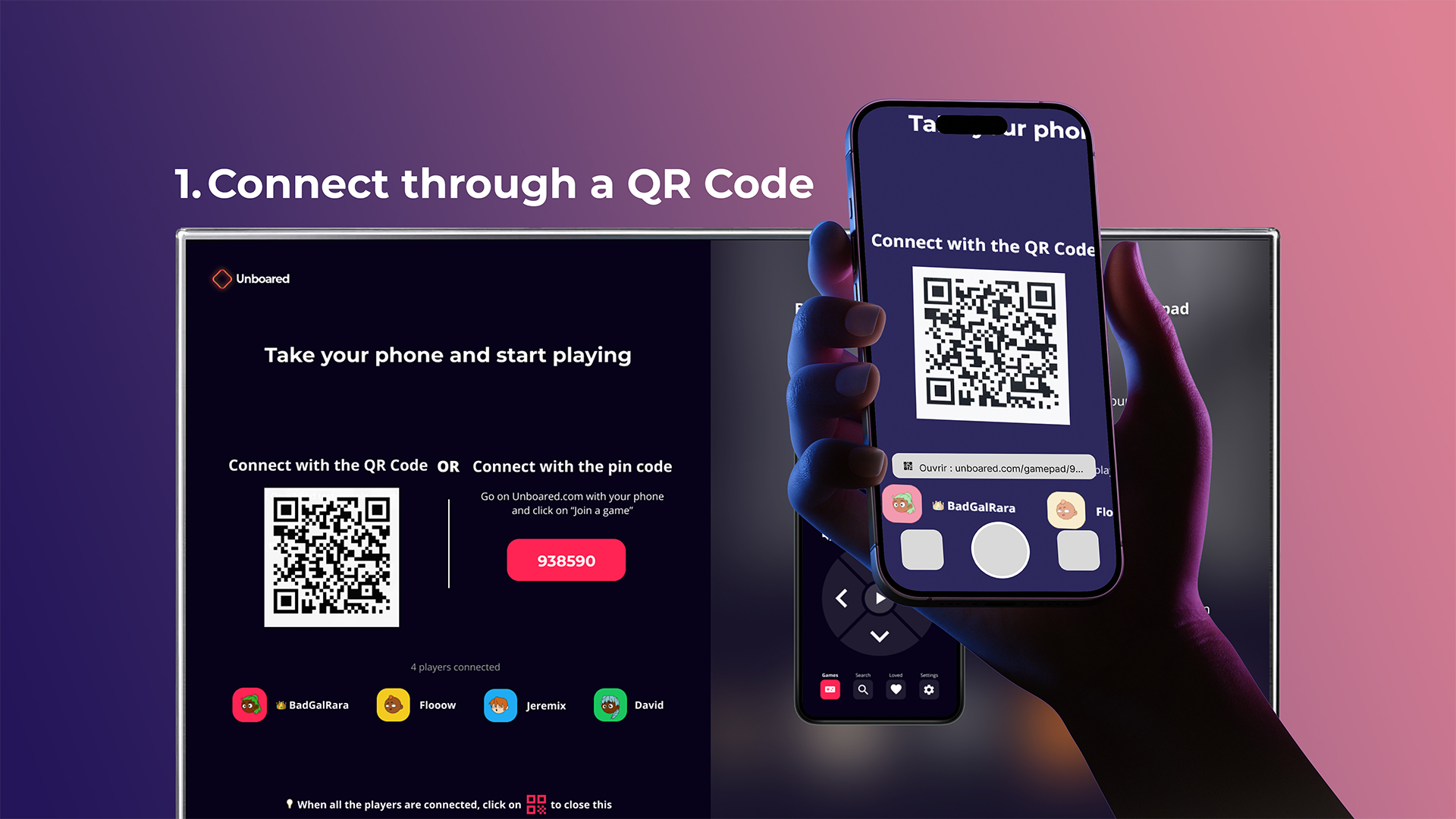
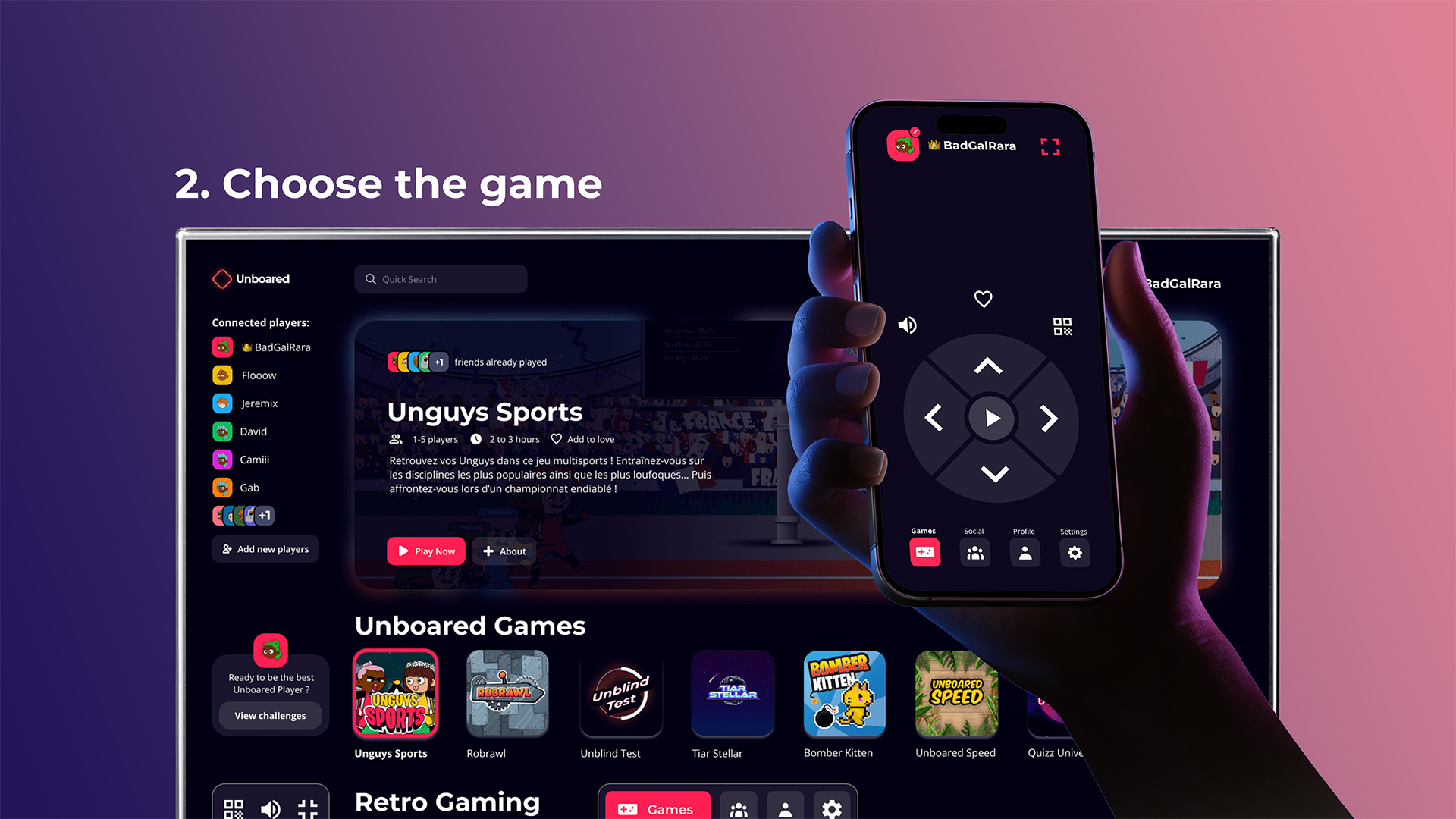
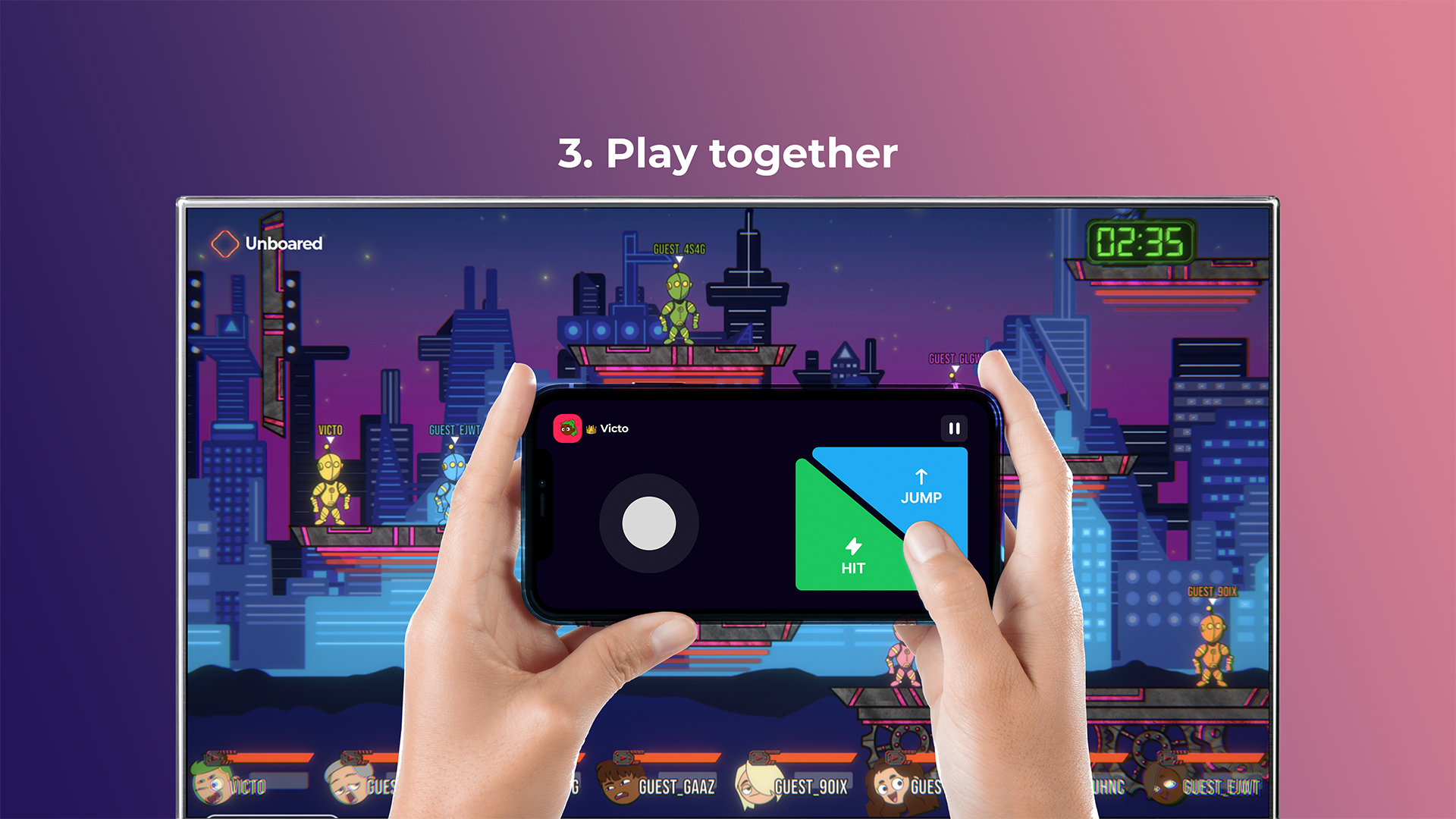
Pivot to B2B, product redesign and Go-To-Market
We launched our alpha publicly after 4 months and attracted several thousand users with just €300 in Meta ads.
At Vivatech, airport operators noticed us: they lacked space, staff, or scalable solutions for engaging travelers. Unboared, requiring only a screen and a QR code, became a compelling proposition.
Pivoting to B2B became a strategic move — not just for product-market fit, but also for revenue generation.
The B2C design couldn’t handle real-world public contexts. New constraints emerged:
In public spaces, users must be able to join mid-game, without interrupting ongoing sessions
The interface must be visible and engaging from afar
Game-switching needed to be intuitive and quick
We redesigned the platform to support:
Real-time connection of new players during a game
Visual clarity at a distance (large fonts, bright visuals)
A passive « attract loop » mode when no one is playing
Airports, arenas, bars... From Game Platform to engagement Engine
We rapidly launched our solutions in a few french airports. We also polished our product for 2 other sectors: arenas and bars.
We decided to set up 2 Unboared products: Unboared Automated (for airports) and Unboared for Animation (for bars and arenas). The last one allow animators to manage games and players.
We began as an experience tool, we continue as an engagement tool. To ensure that our customers continue to use Unboared, we had to offer a business benefit in addition to an experiential one. That’s why we implemented the ability to collect data and also drive traffic to stores.
With a simple screen, a QR code, and a catalog of unforgettable multiplayer games, Unboared transforms passive waiting time into shared memories.
